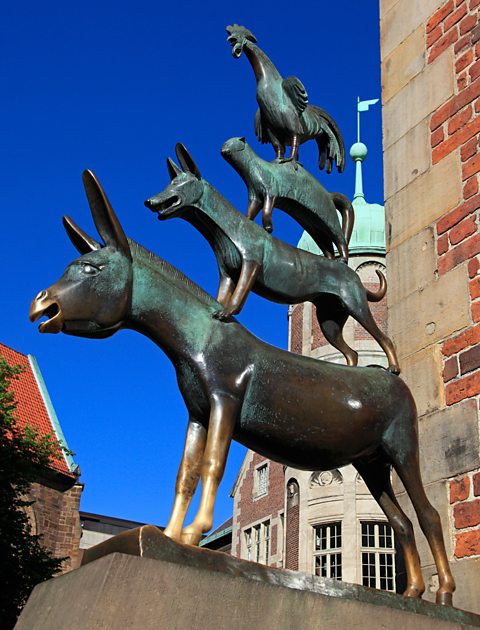Verb as second idea
In German, there is a clear structure to a sentence, so word order really matters.
In German, the verb is always the second idea in a sentence. But this does not necessarily mean that it is the second word.
In English, the verb as the second idea is only true in short, simple sentences with no additional information, eg:
I live in England.
Here 'live' is the second idea, but also the second word in this particular case.
If we add some more information to the start of the sentence, you can see how English and German differ. In the next example below, the extra phrase 'in winter' is just tacked on to the front and the word order for the rest of the sentence stays the same.
In the winter, I live in England.
In German, when an extra phrase is added to the front of a sentence, the verb still has to go second. So:
Ich wohne in England. - I live in England.
but
Im Winter wohne ich in England – In the winter, I live in England.
Look at these other examples of the verb in second place in German:
Meiner Meinung nach essen wir zu viel Fett. - In my opinion, we eat too much fat.
Vor der Schule spielt Dan Fußball. - Before school, Dan plays football.
Question
Look at these present tense examples where the first idea is in bold.
- Ich bin sechzehn Jahre alt. - I am 16 years old.
- Sie wohnen nicht in Bochum. - They don't live in Bochum.
- Der große Bus fährt langsam. - The big bus goes slowly.
- Wir entspannen uns im Garten. - We relax in the garden.
Can you identify the second idea - the verb - in the sentences?
- bin
- wohnen
- fährt
- entspannen
NB Der große Bus - 'the big bus' - is all the first idea
Question
Reorganise these sentences so that the verb is the second idea. Don't forget that it might not be the second word.
Once you are happy with the word order, translate the sentences into English.
- unsere Freunde - wir - Am Montag - besuchen
- erklärt - Mathelehrer - sehr gut - Der neue
- sind - und - das rote Auto - sehr teuer - Das blaue Auto - beide
- nicht - sich – streiten - Die Geschwister
- Am Montag besuchen wir unsere Freunde. - On Monday we are visiting our friends. ('On Monday' is the first idea.)
- Der neue Mathelehrer erklärt sehr gut. - The new maths teacher explains very well. ('The new maths teacher' is the first idea.)
- Das blaue Auto und das rote Auto sind beide sehr teuer. - The blue car and the red car are both very expensive. ('The blue car and the red car' are the first idea.)
- Die Geschwister streiten sich nicht. - The siblings don't fight. ('The siblings' are the first idea.)
Did you know?

Order certainly matters when it comes to the famous bronze statue of The Town Musicians of Bremen – Die Bremer Stadtmusikanten – in the city of Bremen, north Germany.
The statue represents a fairy story by the Brothers Grimm about a donkey (ein Esel), a dog (ein Hund), a cat (eine Katze) and a cockerel (ein Hahn), who head to Bremen to become town musicians – Stadtmusikanten.
On the way to Bremen, the animals decide to spend the night in a forest, where they discover a cottage being used as a robbers' den. The animals decide to frighten the thieves by standing on each other's backs and making a huge noise. As the largest, the donkey stands at the bottom with the dog on his back. The cat stands on the dog's back with the cockerel perched on the very top. The robbers flee in terror at the din and the animals move into the cottage where they live happily ever after. Despite the name of the tale, the animals never actually reach Bremen.
A statue of the animals - in order - can also be found outside each of Germany's five veterinary schools, and features on the coat of arms of the city of Bremen.